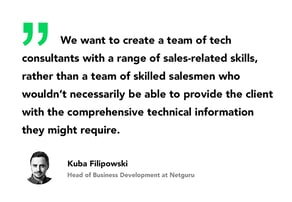Why Startups Fail in 2023: The Most Common Reasons and Solutions

Learning from the mistakes of others can drastically increase your chances of startup success. In this blog post, we’ll dive into the most common reasons why startups fail and provide actionable solutions, so you can avoid the same pitfalls and turn your dream into a thriving business.
Key Takeaways
-
Understand market needs and invest in research to identify profitable opportunities.
-
Build a strong team, hire the right people, develop effective leadership & differentiate your startup from competitors.
-
Avoid common mistakes like inadequate funding & lack of differentiation. Embrace failure as a learning opportunity & seek legal advice for IP protection.
Understanding Market Needs
One of the main reasons many startups fail is not understanding their target market and customers’ needs. A solid business plan, which includes a well-defined business model, and a great product or service are not enough if they don’t meet the demands of your target audience.
Ineffective leadership and financial problems may also contribute to startup failure, but identifying your market needs is the foundation on which your business grows.
Importance of Market Research
Startups need to conduct market research to discover lucrative opportunities and dodge failure. Many entrepreneurs underestimate its importance, leading to a failed startup project due to a product or service that doesn’t resonate with their target market. The lean startup method, popularized by Harvard Business School, emphasizes the need to validate customer demand with a minimum viable product (MVP) that provides reliable feedback.
Without proper market research, even the most innovative ideas can fall flat. Avoiding such a fate involves conducting exhaustive market research and paying due attention to customer interviews and research.
Identifying Customer Needs
The success of your startup hinges on identifying customer needs. One effective approach is to conduct interviews, surveys, and competitive analysis to ensure your product or service meets market expectations. Validating your product ideas with customers before building the product helps ensure that your concept will be successful when released.
Take Quincy Apparel, for example. We realized that young professional women wanted clothing for work that was both fashionable and reasonably priced. Additionally, there was a need for clothes to fit well. So, we created a unique sizing scheme that allowed customers to give us four different garment measurements, catering to their needs and setting our startup apart from the competition in the world of owning your own business.
Financial Challenges Faced by Startups
Money makes the business world go round, and startups are no exception. Financial challenges, such as insufficient funding and poor cash flow management, are common among startups and often lead to business failure.
But fear not! By understanding these challenges and implementing effective strategies, you can increase your chances of joining the ranks of successful startups.
Insufficient Funding
Lack of funding can cripple a startup’s growth, hindering product development, recruitment, and marketing efforts. Many startups struggle to attract investors during their early stages, leading to cash flow problems.
Avoiding the pitfall of insufficient funding involves exploring an array of funding sources, such as:
-
Venture capital
-
Angel investors
-
Crowdfunding
-
Government grants
Additionally, creating a detailed business plan, researching potential investors, and networking with other entrepreneurs can increase your chances of securing the funds needed for success.
Cash Flow Management
Maintaining financial stability and achieving sustainable growth is contingent on effective cash flow management. The CEO plays a crucial role in monitoring cash reserves and ensuring that the startup reaches crucial milestones that lead to successful financing or becoming cash flow positive.
To manage cash flow effectively, you should forecast future cash needs, monitor cash inflows and outflows, and optimize cash flow. Making informed decisions about expenses, investments, and financial planning will help your startup stay financially stable and successful.
Building a Strong Team
Behind every successful startup is a strong team with diverse skill sets and effective leadership, including startup founders. Team problems, such as unclear roles, lack of versatility, and inadequate business knowledge, can lead to startup failure.
Assembling a successful team requires a focus on recruiting the right talent and nurturing effective leadership.
Hiring the Right Talent
Your startup’s growth depends on recruiting individuals with a diverse range of skills, experiences, and expertise. A well-rounded team can contribute to various aspects of your business, including:
-
Marketing
-
Sales
-
Customer service
-
Operations
This diversity increases the chances of success for your startup, as it navigates through the competitive landscape of how many startups and how many new businesses emerge in the market.
Remember, your team is the backbone of your startup, and investing in the right talent can make all the difference in the long run.
Effective Leadership
A startup’s success is propelled by effective leadership. Strong leaders make informed decisions, provide direction, and adapt to changing market conditions.
A good venture capitalist on the board can also contribute to the startup’s success by providing valuable advice and support. However, a venture capitalist who doesn’t know the business can slow things down and offer little to no help.
Hence, prudent selection of leaders and investors is key to your startup’s success.
Navigating Competitive Landscapes
In the rapid business world of today, new businesses, especially startups, need to navigate competitive landscapes to establish their uniqueness and respond to market changes. By staying ahead of industry trends and constantly innovating, you can ensure your startup remains relevant and successful in the ever-changing market.
Differentiating Your Startup
Standing out in a crowded market, especially for small businesses, can be challenging. To differentiate your startup, focus on offering unique products or services, exceptional customer experiences, and innovative business models.
By investing in research and development, leveraging technology, and focusing on customer experience, you can set your startup apart from the competition and establish a loyal customer base.
Adapting to Market Changes
Adapting to market changes requires staying updated on industry trends and being receptive to customer feedback. Pivoting your business strategies when necessary can ensure your startup remains competitive and relevant in the ever-evolving market.
By being flexible and ready to shift gears when needed, you can steer your startup away from failure and maximize your chances of success.
Learning from Failed Startups
Learning from the mistakes of others is a powerful tool for entrepreneurs. Understanding the causes of startup failures can help you sidestep similar errors and enhance your likelihood of success.
Embracing failure as a learning opportunity can enhance your resilience and perseverance, turning setbacks into valuable lessons for future growth.
Common Mistakes and How to Avoid Them
Many startups fail due to common mistakes such as:
-
Poor market research
-
Inadequate funding
-
Weak leadership
-
Lack of differentiation
Acknowledging these potential dangers and deploying strategies to evade them can substantially boost your likelihood of success.
Staying informed about industry trends, conducting thorough market research, and seeking feedback from customers can help you avoid falling into the same traps that have doomed other startups.
Embracing Failure as a Learning Opportunity
Failure doesn’t have to be the end of the road; it can be a valuable learning opportunity that helps you grow and develop as an entrepreneur. Reflecting on what went wrong can provide valuable insights and help you develop strategies to avoid making the same mistakes again.
Many successful entrepreneurs, like Steve Jobs and Mark Zuckerberg, have faced rejection and setbacks but used these experiences to refine their ideas and ultimately achieve great success. Viewing failure as a learning opportunity could enhance your prospects of success in future undertakings.
Legal Considerations for Startups
Legal considerations play a significant role in startup success. Safeguarding your intellectual property, adhering to regulations, and steering clear of potential legal issues contribute to the long-term success of your startup.
This section delves into the significance of intellectual property and regulations, alongside the benefits of investing in legal advice.
Intellectual Property and Regulations
Intellectual property and regulations are especially important in highly regulated industries or those involving proprietary technology. Safeguarding your intellectual property and abiding by industry regulations can help ensure your startup’s success and attract investors.
To secure your intellectual property, ensure clear ownership and obtain the necessary legal paperwork to protect your ideas and innovations.
Investing in Legal Advice
Investing in legal advice and research from the beginning can help your startup navigate legal challenges and avoid potential pitfalls that could lead to failure. Experienced lawyers specializing in your business area can provide valuable guidance and ensure your startup stays compliant with industry regulations.
Taking a proactive stance and seeking legal advice can help mitigate risks, establish a solid legal foundation, and enable well-informed business decisions.
Summary
In conclusion, startup success is achievable by understanding market needs, managing financial challenges, building a strong team, navigating competitive landscapes, learning from failed startups, and addressing legal considerations. By implementing the strategies discussed in this blog post, you can increase your chances of success and join the ranks of thriving startups that have overcome the odds.





















